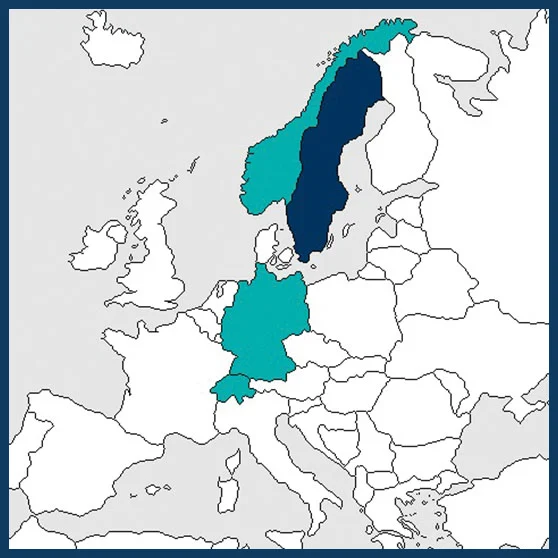12-2016 to 12-2019
€ 2,093,367
Prof. Tord Snäll
tord.snall@slu.se
Swedish University of Agricultural Sciences, Uppsala, SWEDEN (Coordinator)
Technische Universität Braunschweig, Braunschweig, GERMANY
Technische Universität München, Munich, GERMANY
Norwegian Institute for Nature Research, Oslo, NORWAY
University of Zürich, Zürich, SWITZERLAND

Wood production is a pivotal provisioning ecosystem service of major economic importance and a key component of the transition from a fossil- to a bio-based economy. However, the intensive utilization of forests is also a key reason for spe- cies declines in the EU and globally. We therefore need to modify the forestry and conservation strategies to secure both high yield of wood products and viability of forest species.
The overall objective is to identify national forestry and conservation strategies that produce wood in a sustainable way. The strategies will balance the global demand for wood, the profitability of forestry and the long-term viability of forest species. To achieve this, the project aims to estimate the future global demand for wood and the supply of wood in EU countries during the coming 100 years assuming different scenarios of socio-economic development and climate change. Based on the estimated global demand for wood from our study countries, the project will identify landscape-scale scenarios with profitable forestry and cost-efficient conservation. In order to simulate these scenarios, the project will develop models for the spatial dynamics of forest species. This work includes testing how different properties of the green infrastructure, such as connectivity among habitats, may affect the spatial dynamics of different species. The mo- dels will mainly be based on systematically collected field data, but the potential of using Citizen Science Data (CSD) will also be evaluated. CSD are voluntarily reported observations of species to open-access websites, such as Artportalen. se or gbif.org.
The core work is to formulate and simulate scenarios for land-use, forestry and conservation, from the global to the landscape scale. The global scale simulations will account for factors such as consumer demand, production capacity, and competition between geographical regions and land use sectors. The landscape scale simulations will differ concerning forestry parameters, such as stand rotation length or tree species composition. They will also differ concerning conservation strategies, such as how long time the areas are set aside and where in the landscape the set-asides are located. Empirical data will be compiled from the website Artportalen.se holding CSD, but will also be systematically collected in the field. These data will be used to build the models for the spatial dynamics of forest species to be used in the scenario simulations.
A two-way communication with stakeholders throughout the project will be implemented. Initially, stakeholders will provide input on the scenario formulation. When the results from the scenario simulations are available, discussions with stake- holders will be carried out on how to translate the findings into specific, regional management guidelines. Finally, the dissemination of the project’s results will be made together with the stakeholders.